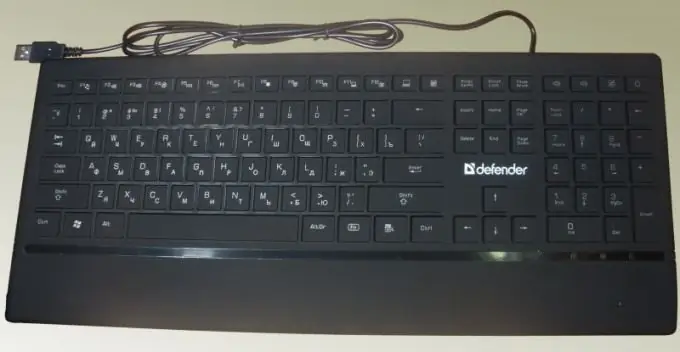Unfortunately, keyboard malfunctions are not uncommon. Usually this malfunction appears when the moment of entering the BIOS has already passed, and you see that the indicator lights are not lit, and you understand that the keyboard is not functioning.

It is necessary
A working keyboard tested on another working computer, a second computer
Instructions
Step 1
The main reasons for such a malfunction lie in a hardware failure or software error. Checking the hardware version is very simple - check the plug on your keyboard and the connection socket. If everything looks okay, replace the keyboard with a good one and restart the computer. In case of further inability to use this device, check the version of the software malfunction.
Step 2
First, try to reboot the machine. Perhaps the operating system will localize and fix the software glitch. Try reinstalling your keyboard. To do this, in the "System Properties" window, "System" "Control Panel", find the "Hardware" tab. Click the Device Manager button. In the "Device Manager" window, select the "Keyboard" item and delete it, close the "Device Manager". Then enter the item "Hardware Installation" and run the "Installation Wizard". Click the Next button and wait while the installer detects the keyboard. The OS will inform you about the detection and functioning of the keyboard by turning on the Num Lock indicator light. If the program displays a message about the completion of the installation of new devices and prompts you to reboot, then click the "No" button, since the keyboard is already functional. Also click the Finish button in the Add New Hardware Wizard and exit the System Properties menu.
Step 3
One of the options for a malfunction may be that the operating system does not detect the required driver. To reinstall the driver, go to the website of your keyboard manufacturer, select the model you need, download the archive and unpack it. As a rule, such drivers come with their own installation program, and then you just need to run the file. If there is none, then you will have to launch the "Device Manager", select the "Update driver" command and specify the path to the directory in which the unpacked driver is located in the manual search mode. Restart the computer after installation.
Step 4
Often, a non-working keyboard is the result of a virus program that has settled in your machine. A typical sign of this is the failure of the mouse, as well as the touchpad. Check the system with an anti-virus program. It's best not to rely on free utilities that promise instant success and heal your computer. Use proven and well-known antiviruses. The chances of success with such collateral are much higher.
Step 5
A very real reason for a keyboard failure can also be the lack of a BIOS connection. This failure is especially common on machines with built-in keyboards. Correcting the situation can be quite simple. Enable BIOS while the computer boots. Find the tab with a list of input and output devices. Select USB Controller and enable Enabled. Enable the same mode for the USB Keyboard Setup item. Exit BIOS with confirmation to save new settings. In the event that none of the above helped you, then contact the service center.






